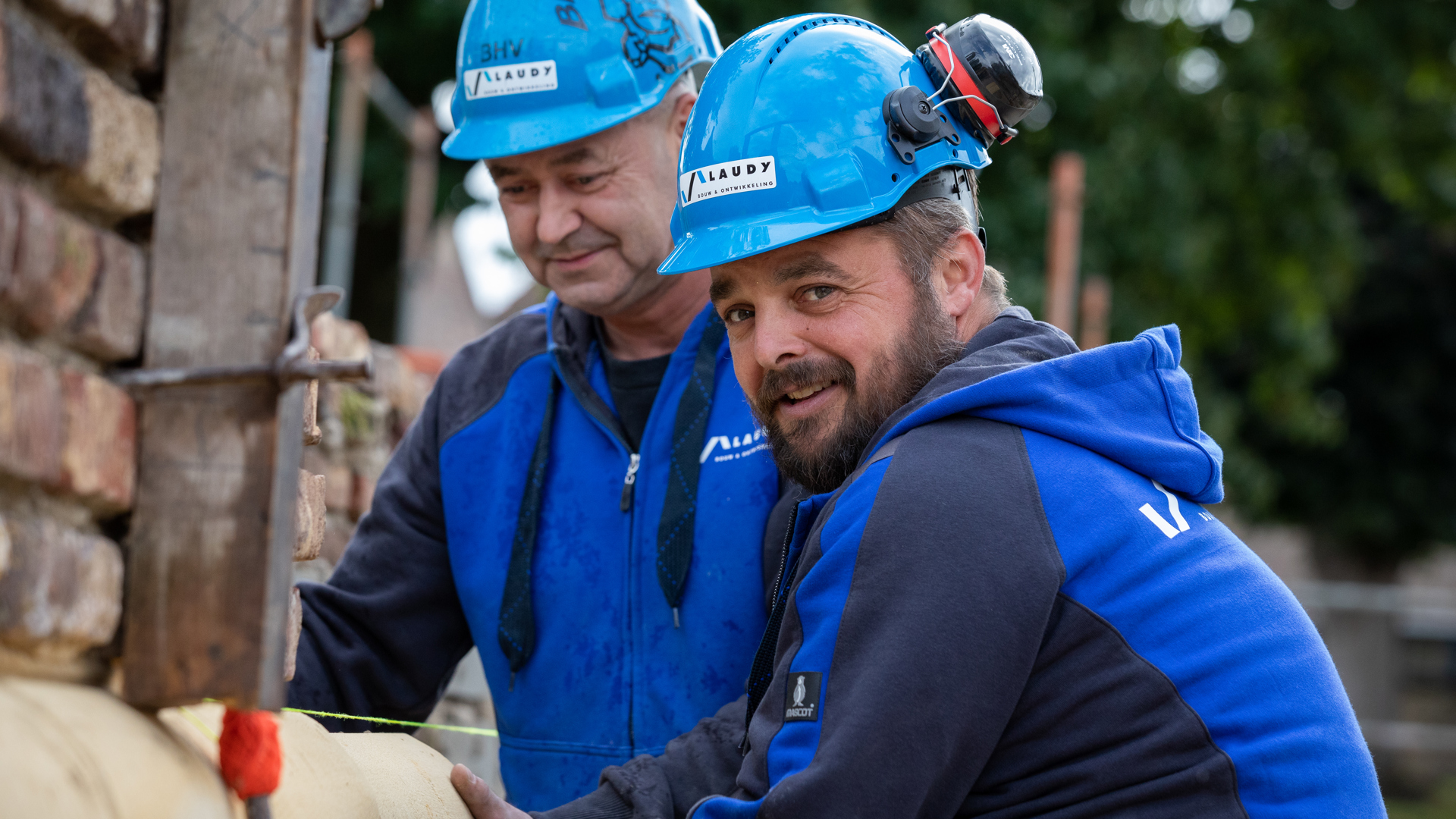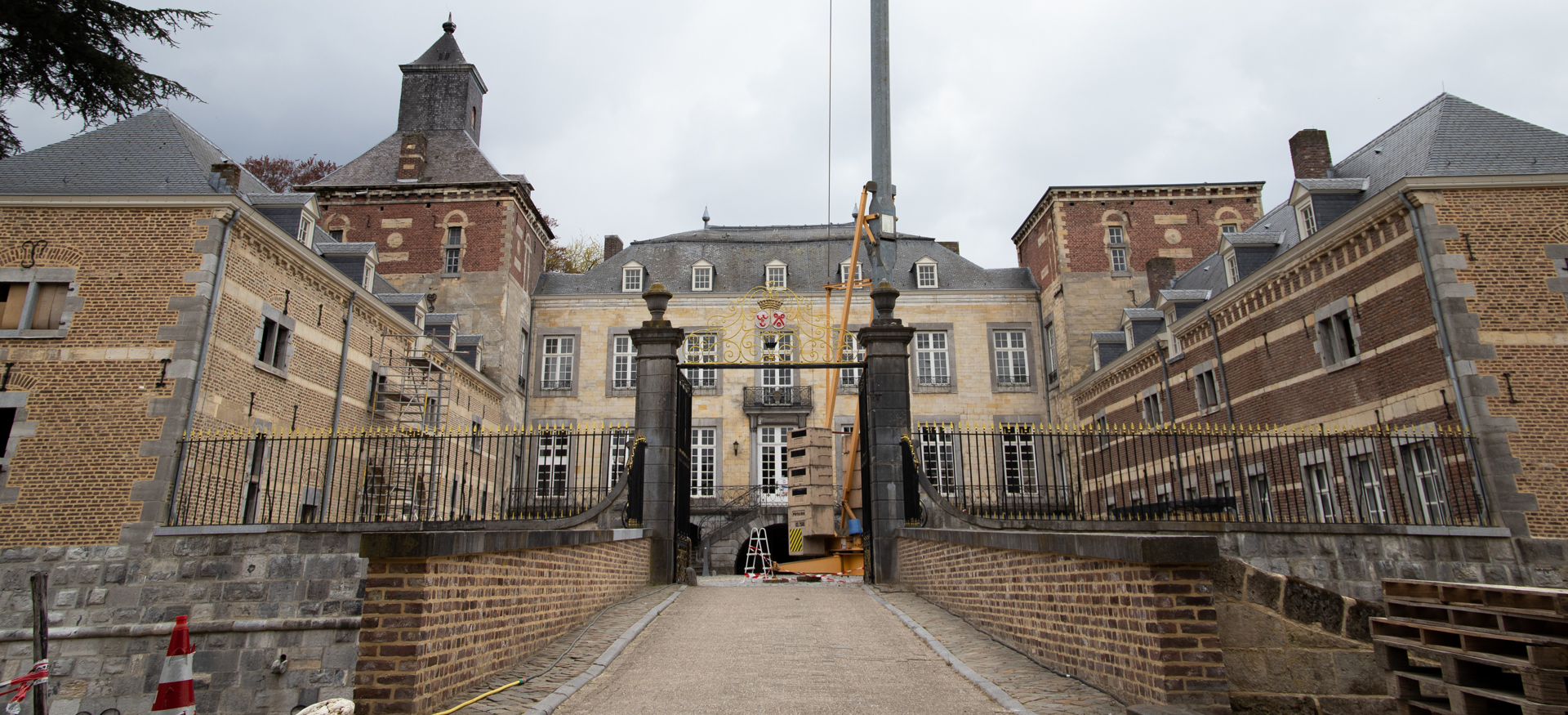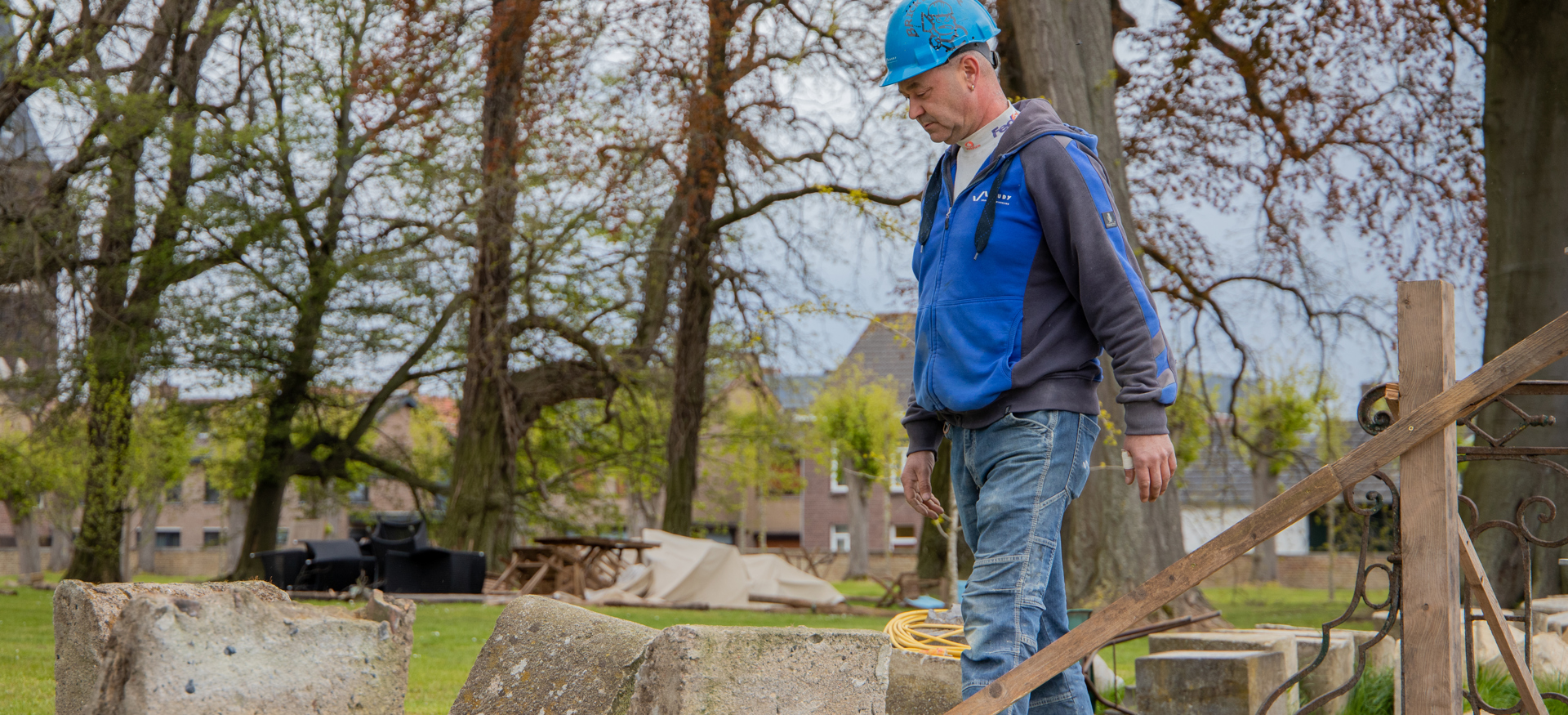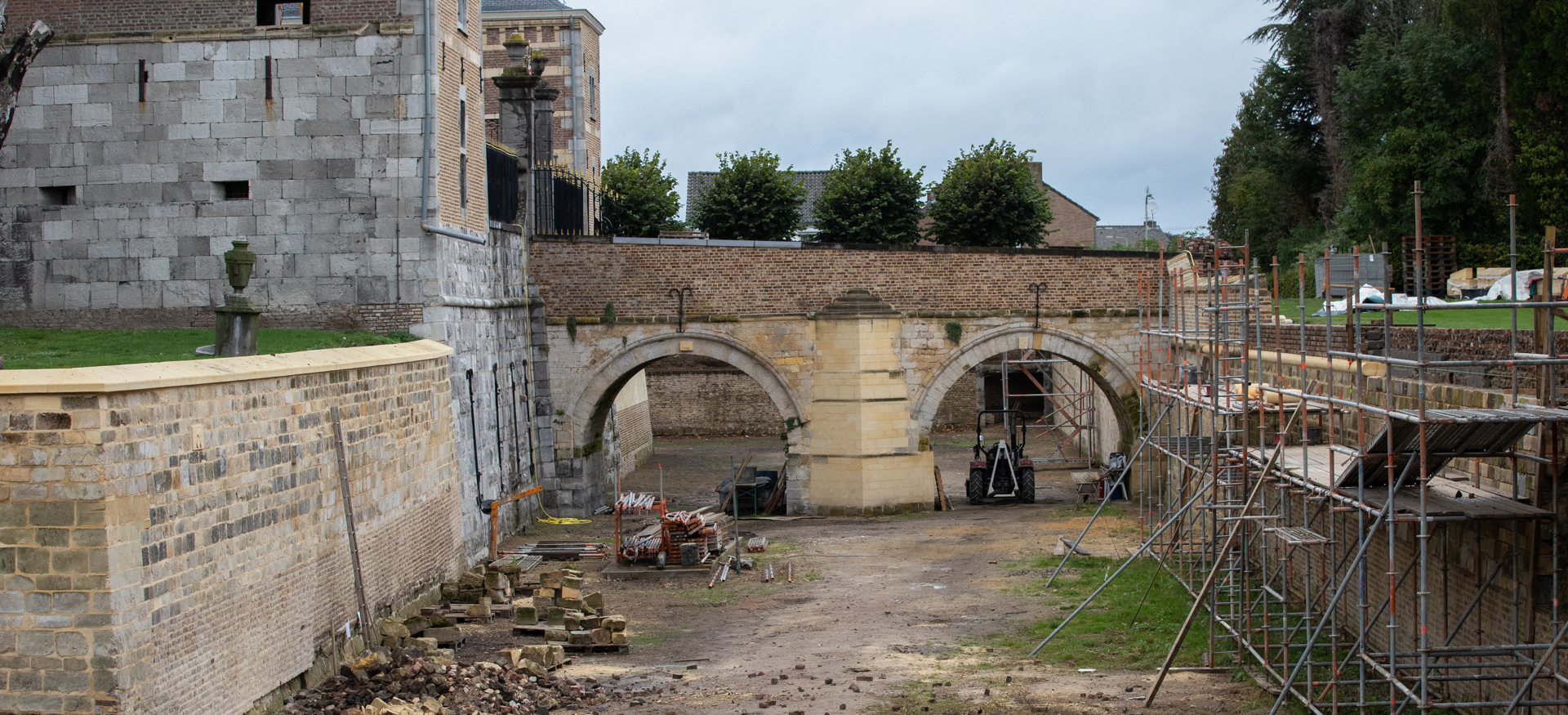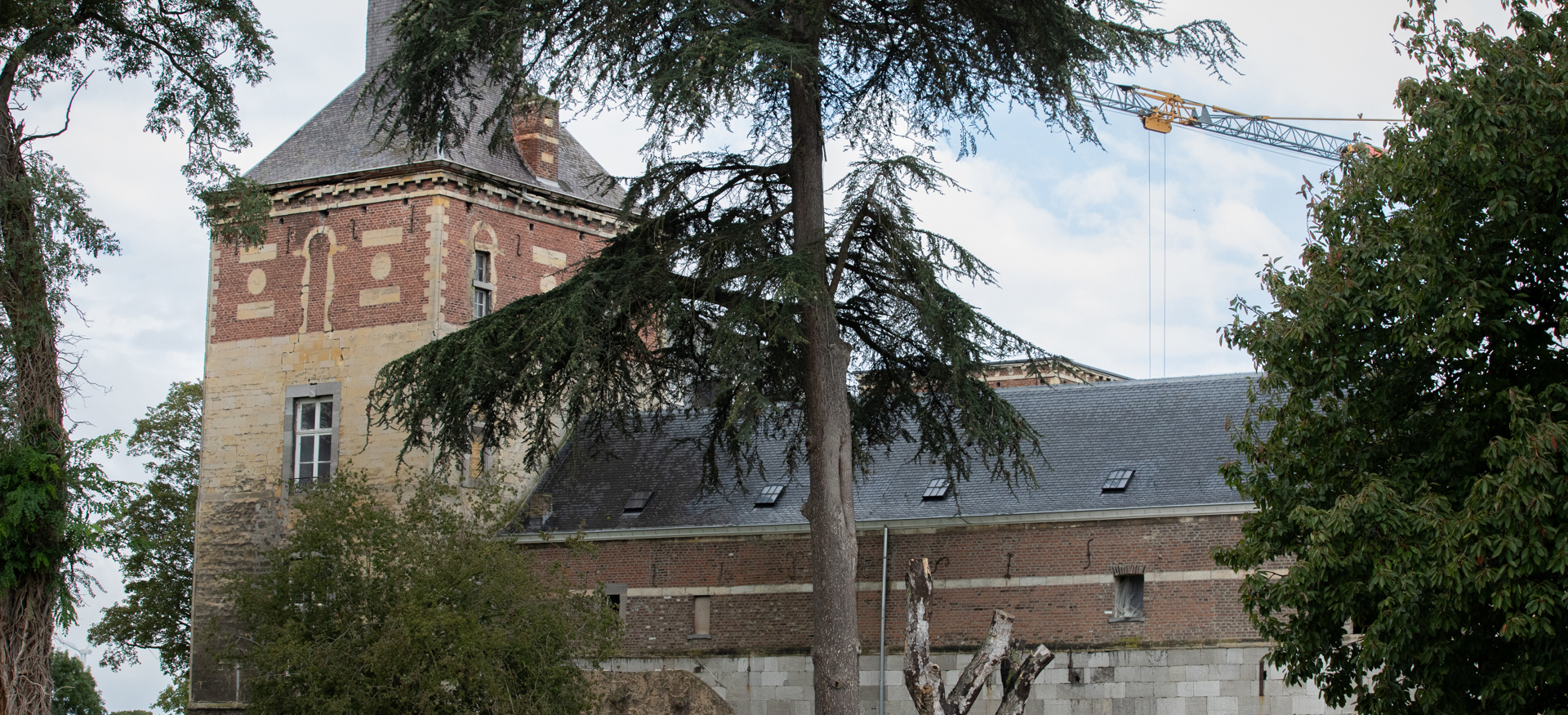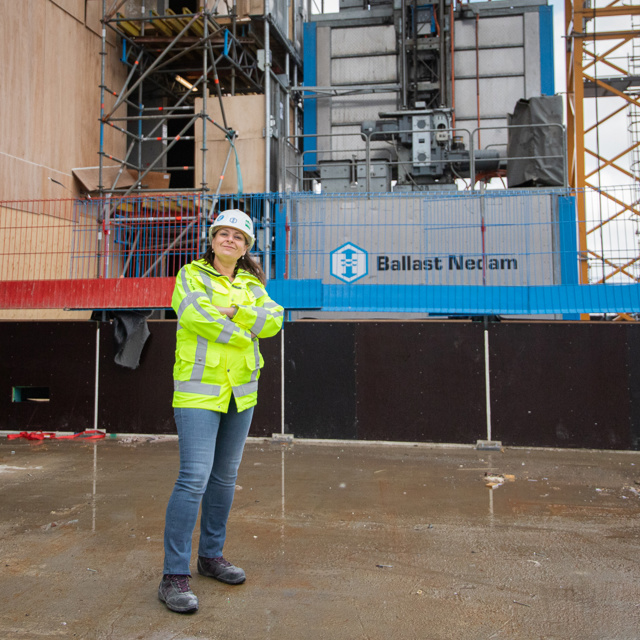Restauration of Borgharen castle
Time, attention and a large amount of knowledge come together in the restoration of Borgharen Castle, just outside Maastricht. Two bricklayers from Laudy Bouw & Ontwikkeling, a subsidiary of Ballast Nedam, are working with a team of volunteers on the complete restoration of this castle.
He cannot do that restoration alone. In a short time, he gathered a loyal group of volunteers ranging in age from 37 to 87. Some are former restorers, others have worked as carpenters for years or are simply dedicated and enthusiastic to make it a success. They started cleaning up in 2015, after which the restoration started in 2018 together with Laudy Bouw & Ontwikkeling.
'Never experienced anything like it before'
Marc Bokop has worked as a bricklayer for Laudy for many years. From the first day of work he has been involved in the restoration and coordinates the bricklaying work. "This is really nice work. Restoration is my passion and on this project everything comes together. We do everything ourselves and quality is paramount. I've been on many projects in the past few years, but I've never experienced anything like this. On this project, there is a very close, unique cooperation between the craftsmen and the volunteers."
Marl: the white gold of Limburg
The word 'marl' makes Marc's eyes sparkle. "We call it our 'white gold', it is precious and can be applied beautifully. The darker the block appears, the stronger it is." On this project, marl recurs in several places, including the cornice in the moat. The blocks are placed in a semi-circular shape, so that they stand out gracefully next to the stone blocks. Marc explains: "You can't simply position marl blocks. It is made of layers of shellfish that have sunk to the bottom of the sea over millions of years, also called 'the army of a marl block'. This makes a marl block very vulnerable at the sides, but incredibly strong at the top and bottom. So we have to make sure that we place it on the right side."
Despite the strength it can withstand, marl is a relatively soft material. Therefore, it is necessary that the joints are also soft enough so that they move along with the marl. Hard cement joints would make the marl break as soon as it moved due to temperature differences or other factors. That is why yellow restoration joints were chosen. "Typical Limburg," says Marc. "The yellow joints are a combination of lime and yellow sand, which allows the joint to move flexibly with the marl. This material really needs that."
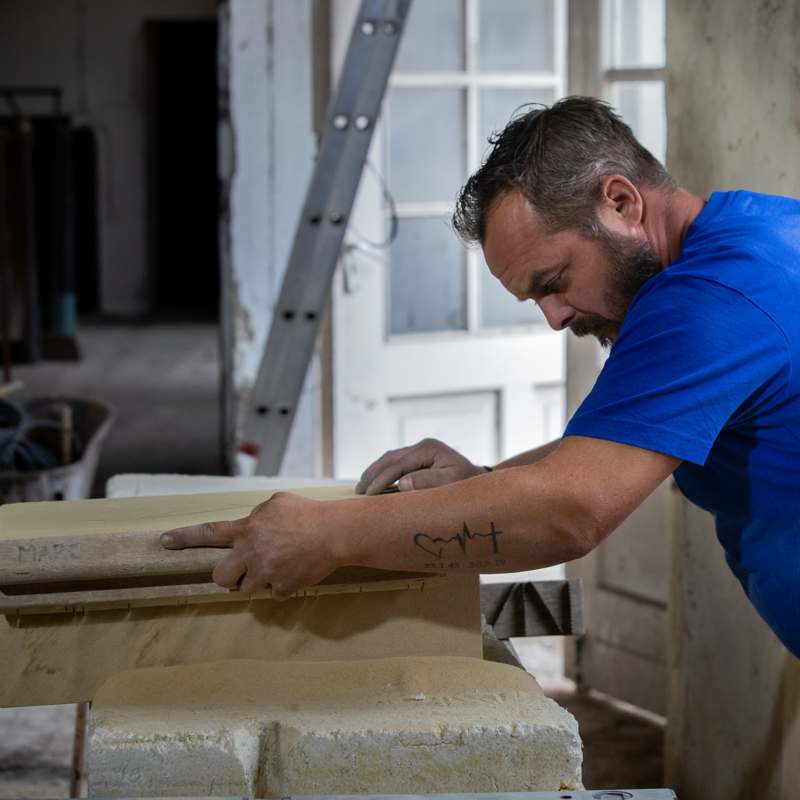
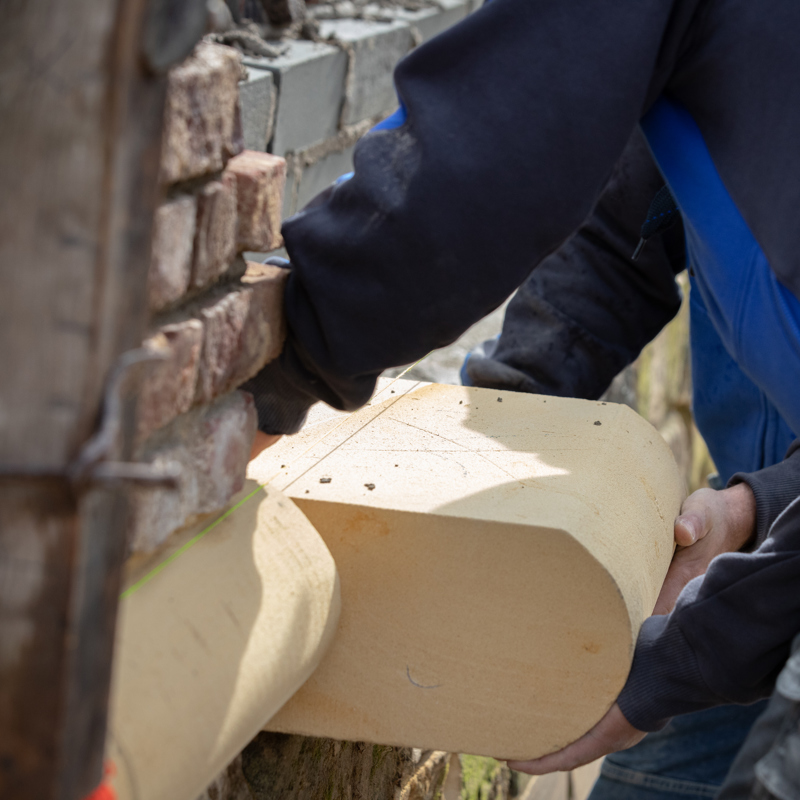
The right colour
While outside, volunteers are working hard on the canal, inside, restoring interior elements in the salon and other rooms. In the 'Blue Room', the heart of the castle, several layers of paint are coming up. Layer by layer, the interior of the room is peeled off. When the right colour has been chosen, the whole room is brought back into the right style. Meanwhile, the original art is bought back and old murals in the corridors are brought to light.
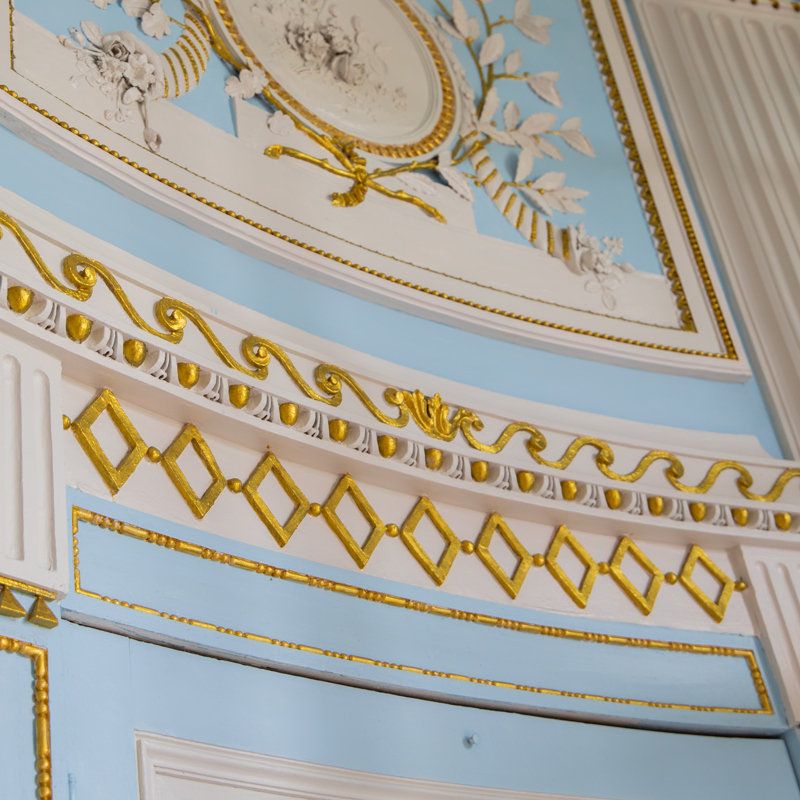
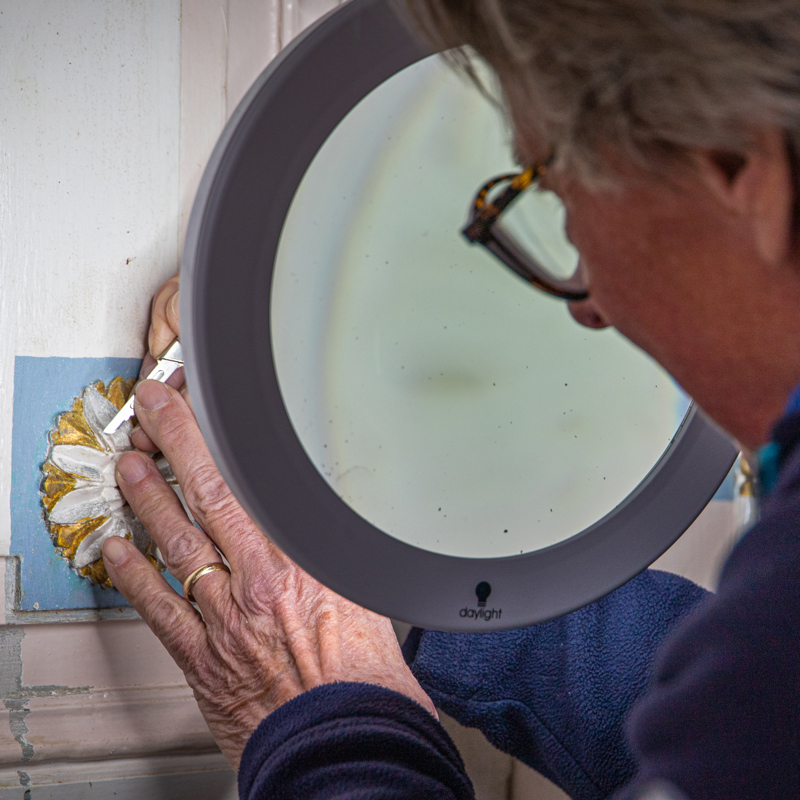
Are you curious?
Would you like to come and take a look in the meantime? That is possible! Every Saturday, the restoration work on Borgharen Castle is explained during guided tours at 10:15 am and 1:15 pm. For more information, please visit the website.

